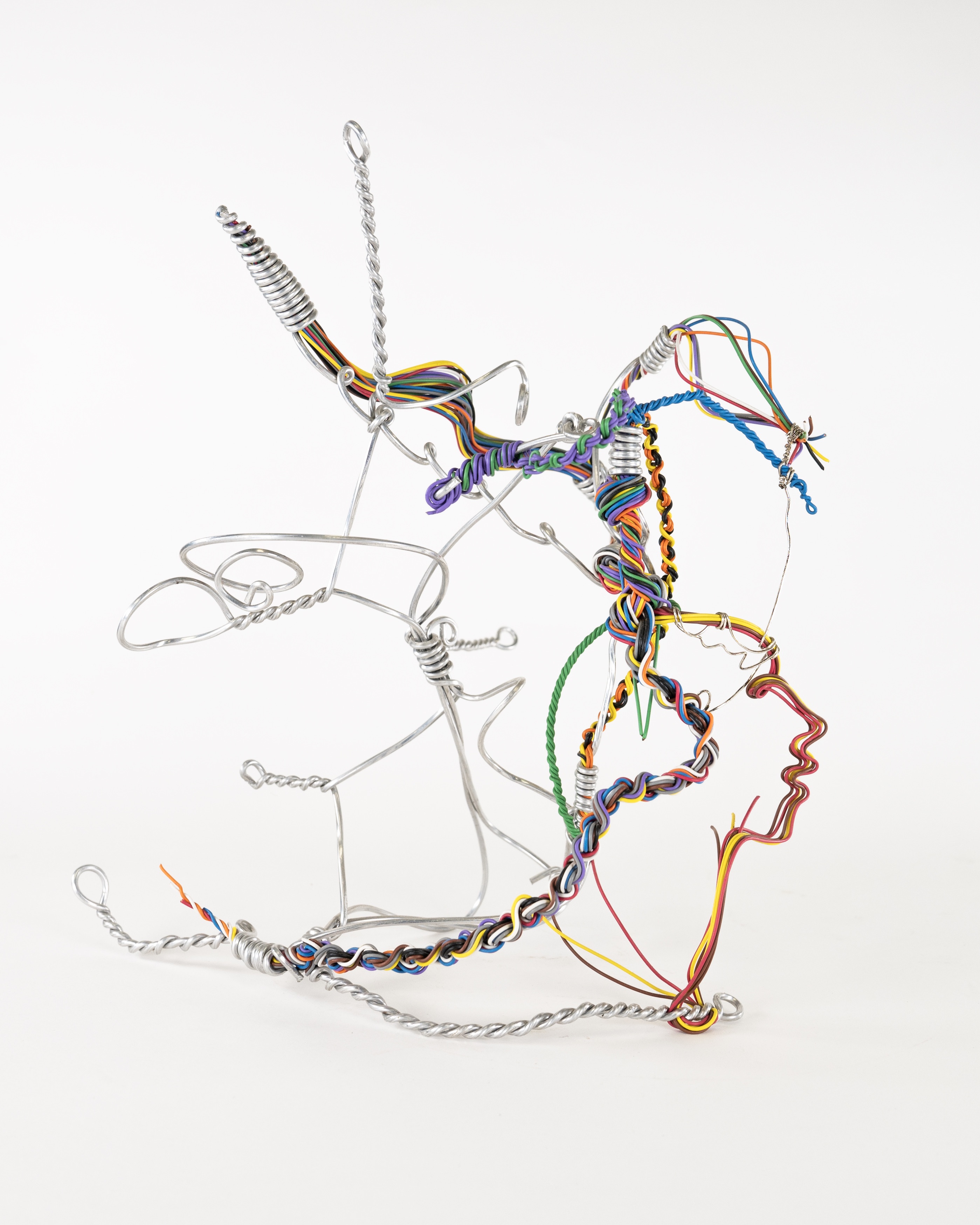4 July 2024 The artist and musician reclaims beauty and meaning from rubbish, decay and death, using materials from rusted padlocks to old organ pipes. It’s raw, inspiring and absolutely joyous.
Should you review the art or the artist? With Lonnie Holley it’s hard to tell them apart, and completely impossible to separate his creativity from the mystery of being alive. When I arrive at Camden Art Centre to review his show, I find the artist making a little sculpture from bits and pieces he has found laying around outside. He starts with a drawing of a woman, then creates her portrait in copper wire, screwing up the drawing to make her hair, then finally gives her a “bow” that’s a discarded grape stem. “She heard it on the grapevine”, he jokes. Transformation, salvation, music – it’s a hypnotic demonstration of his work.
There’s more magic upstairs in a film of Holley performing his 18-minute punk-blues anthem I Snuck Off the Slave Ship, over a montage of images of his present and past. And what an extraordinary past it is. Born in Birmingham, Alabama, in 1950, Holley learned the value of recycling from his grandmother, who used to take him to salvage whatever they could from the scrapyard. He compares his way of making art with the resourcefulness of Martin Luther King who, in prison in Birmingham, Alabama, for fighting its segregation laws in 1963, “wrote on toilet paper”.
I don’t spot any toilet paper in the show but I do see a massive dirt-stained firehose wrapped like a flattened python round a stack of old wooden chairs, a collection of shooting-range targets, a ladder necklaced with barbed wire.
These monumental works by Holley belong to the great tradition of American assemblage art that goes back to Robert Rauschenberg and Jasper Johns. What is it that gives American art such an affinity with garbage? It could simply be that no other nation has produced so much stuff over the last hundred years to discard. Artists can burrow into that American treasure trove of waste in endless recycled riffs. Holley does this but keeps the found stuff extremely raw and makes you aware of a bitter, violent undertow. How many fires did that firehose see? What future killers trained with those cardboard targets? What memories are imprisoned in the padlocks that recur in his work?
Yet Holley also bears witness to joy and survival. His assemblage of wooden, roughly made organ pipes recalls the churches that helped people resist and endure. One of the locations where he performs I Snuck Off the Slave Ship on film is just such a southern church, not much more than a shed with a cross on it, but a place of community. Across the church-organ sculpture he has painted a chorus of ghostly faces, like the spirits of those who once sang to these silenced pipes.
Holley’s own music, an avant garde yet potently emotional distillation of soul, blues and metal, is essential to understanding his art. It gives song to his paintings, which are abstract but lyrical galleries of smoky silhouetted faces, people remembered, summoned in a trance.

Lonnie Holley, Summoned in a trance … Retreating Her Power, 2001. © Lonnie Holley. Courtesy Edel Assanti. Photo: Truett Dietz
And that’s when dry, rationalist comparisons with Rauschenberg or whoever give way to pure pleasure in seeing Holley’s compulsion to improvise art from America’s wreckage. One gallery teems with small, complicated assemblages on plinths that glisten like jewellery. They are not made of precious metals, though, but release an unpromised beauty from rusted metal, conglomerate, floor tiles, chicken wire, circuit boards, bottles, ribbons, a light switch, plastic plants, washers, wood.
History is everywhere in this exhibition, with detours into the past you don’t always expect. An installation of old opera gloves – all white except for a single black one – seems pretty clearly to suggest the balls of the racist old southern elite. But what about the gas masks on that barbed-wire-wrapped ladder? It’s called Foxhole. Holley’s grandfather, he tells me, travelled to Europe to fight in the first world war. But when he was preparing for the show Holley also discovered this building was bombed in the blitz during the second world war. So the gas masks also hold a very local London history.
It’s one thing to see art made from someone else’s trash but when you see how Holley finds the beauty and meaning that’s just lying on your own doorstep it’s illuminating and humbling. He is a truly inspiring creator improvising new life out of decay and death.
That doesn’t mean he denies the horrors around us. “I woke up in a fucked-up America,” declares another of his songs, which laments the building of the wall by the first Trump administration. As the world fears a second, here is the soul of another and better America: an art that is a resource of hope, whatever may come.
Holley teaches me his handshake: you both hold your thumbs high as you clasp hands. “Thumbs up for mother universe!” says this artist who recycles the wasted and reclaims the lost.

